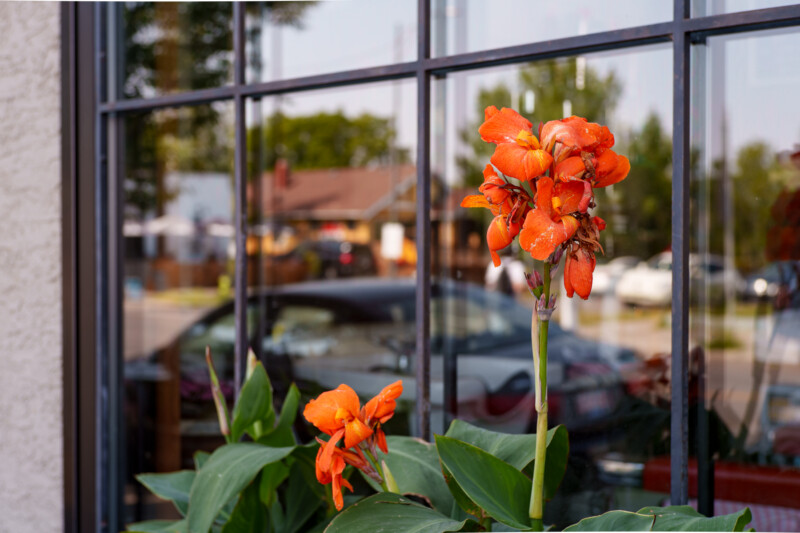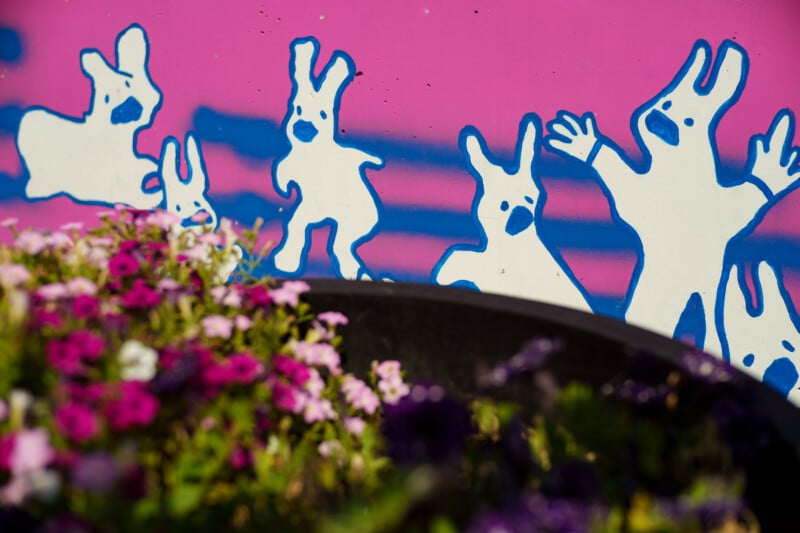
Light Lens Lab recreates classic optics with a passion for sharing the experience of vintage glass with the masses. There is a previous review of the 50mm f/1.2 “1966” on PetaPixel I encourage you to read, but I wanted to speak about my own experience using it. I’m grateful for the opportunity too, because I don’t have the forty thousand dollars to buy the original Leica Noctilux 50mm f/1.2 made between 1966 and 1975.
The $2,300 price Light Lens Lab is asking, by comparison, is a lot more palatable.
Often I get to review lenses manufactured in China which have oodles of flaws and real character largely due to a concerted effort to keep things cheap and accessible. That is not the case with this lens. Light Lens Lab clearly has a love for the classics and has copied the original Leica lens down almost to the individual screws.
Most people will want to use these lenses on an M series Leica body but I opted for an adapter and a Sony a7R V instead. Focusing was tricky due to the inherent softness when using these lenses at the widest aperture but I got used to the experience pretty quickly and used the focus magnifier judiciously. I don’t think anyone should expect this lens to resolve a full 60 megapixels, but frankly, that’s not the point of this optic.
Light Lens Lab 50mm f/1.2 “1966” Review: Mimicry is Flattery
If it weren’t for the Mandarin characters etched on the lens, you’d be forgiven for thinking it was the real deal: the fit and finish of the lens is impeccable. Everything turns smoothly and mounts tightly. Even the hood is meant to follow the design of the original. The lens takes 49mm filters and is available in three different types of metal construction. You can get both chrome or black paint versions if that’s to your taste, but here I used the lightest aluminum constructed lens which comes in at just under 16 ounces (450 grams). There is also a heavier classic Brass version at 22 ounces (632 grams) and a prestigious Titanium version that is just shy of 18 ounces (506 grams).


The similarities to the original Leica lens aren’t merely cosmetic. Light Lens Lab uses a type of glass that almost exactly matches the vintage formula and even hand grinds and polishes the twin aspherical elements that made the original so famous. This means that the look of the images out of the new 50mm f/1.2 are an almost exact match to Leica’s original but this also includes the optical flaws which you would expect from a mid-century piece of glass. If you are looking for a sharp and well-corrected 50mm lens, this is not the one for you.


I was surprised at just how bad the results were and I had to remind myself that I was looking at this lens with the same discerning viewpoint that I would give to a modern optic, which isn’t necessarily fair. The Light Lens Lab optics aren’t exactly cheap and the goal is not to make a budget product but rather to mimic a classic formula down to the most minute of details. If the Light Lens Lab 50mm can provide the same experience as an insanely expensive museum piece then I want it to give me as close to that exact experience as possible.


Light Lens Lab 50mm f/1.2 “1966” Review: Beautiful Flaws
The “Leica glow” is alive and well with this lens and shooting at f/1.2 is going to create images with a soft focus effect and a dreamy-looking blur to the entire composition. The lens doesn’t really tighten up until about f/5.6. Vignetting is obvious and distortion will need to be corrected in post. I never could get the corners to sharpen up in any major way, either.


Boy does this lens flare, too. I actually found the red glow caused by shooting towards the sun to be quite pretty, though and I would happily use this lens for backlit portraits and found the look created by the old single-coated optics very appealing. But it is going to be an issue anytime bright light sources are within the frame.
Bokeh is also quite surprising. The Light Lens Lab 50mm renders the same swirly cat’s eye look to specular highlights at wide apertures that the genuine article does and I’m here for it. The highlights themselves, however, have a strong soap bubble effect and plenty of onion rings too. Transitions from in-focus to out-of-focus areas are surprisingly smooth and beautiful and I didn’t find out-of-focus backgrounds to be distracting at all. This is a gorgeous lens for shallow depth of field work.


So far, all of these characteristics feel vintage and accurate to the original but unfortunately, the serious longitudinal chromatic aberration (LoCA) is present too. Of course, this would have been present on the Leica version as well but the magenta and green color fringing is very strong at the wider apertures and will be very difficult to remove. I often found the background to have a distinctly colorful tone and chromatic aberrations run rampant on any contrasty edges in the frame too. Again, if you are looking for a well-corrected lens this is not the one you want.


With the Light Lens Lab 50mm f/1.2 “1966” It Is About the Journey
So why even look at something like this if you are paying a hefty price tag for a subjectively bad lens? You already know if this is the kind of experience you are looking for, and Light Lens Lab is allowing you to shoot glass that is so closely matched to the much-loved classics that are financially beyond the reach of most people.
It’s clear that Light Lens Lab is making the 50mm f/1.2 “1966” and others like it from a place of respect and reverence with an attention to detail that does the originals justice. Think of these optics as a time machine of sorts and take the flaws in stride, because you might just find yourself having a lot of fun making images that harken back to the golden age of photography.



